A newly emerged photo provides our best look so far at the unusual layout — and continued construction work — of Iran’s intriguing drone-carrier ship, the IRGC Shahid Bagheri, including its angled flight deck. Converted from an existing commercial vessel, this so-called “forward base ship” is part of an expanding series of aviation-capable Iranian designs, some of which have even undertaken global presence operations, although the broader purpose of these ships remains somewhat unclear.
Another, differently cropped version of the same image seen at the top of this story:

While the date of the latest photo is unclear, the vessel has certainly undergone additional work since it appeared in a video late last year, with the flight deck looking much more complete, including an operating surface being installed along with deck markings, for example.
Clear shot of the deck of the Shahid Bahman Bagheri's flight deck in its conversion from container ship to carrier.
Relatively narrow deck. Certainly intended for UAVs.pic.twitter.com/Lp1vrPKpzf— Aᴍɪʀ (@AmirIGM) December 25, 2023
Being built for the Islamic Revolutionary Guard Corps (IRGC) Navy, the Shahid Bagheri is a conversion from the container ship Perarin. It’s expected that another such conversion will be completed, the Shahid Mahdavi.
The design that has been dubbed by some as “Iran’s first aircraft carrier” — claims that have also attracted some ridicule — makes use of the container ship’s roughly 790-foot length to accommodate a flight deck and, as clearly seen in the new photo, a ‘ski-jump’ takeoff ramp.
New photos of the ski jump of the first Iranian drone carrier named Shahid Bagheri under construction (conversion from a container ship). https://t.co/fSNhcXeJjJ pic.twitter.com/L7cA1kvEt2
— Mehdi H. (@mhmiranusa) May 16, 2023
The fact that the Shahid Bagheri retains the original superstructure, which spans the entire width of the deck, means that a conventional flattop configuration cannot be adopted. Instead, an angled flight deck provides the requisite runway length, presumably for launch and recovery. Adding the angled deck — which extends all the way to the bow ramp — involves the construction of a prominent overhang or flare on the left-hand side of the vessel. In contrast to the satellite image seen below, the angled deck now has white-painted markings applied, showing the margins, which extend to the end of the ramp, as well as the centerline.
Still, how exactly this will work in practice is unclear, as are the kinds of aircraft that will sortie from the ship.
The dimensions are very tight and the superstructure is located immediately next to the angled deck area, meaning that recovering aircraft, if indeed they plan on recovering aircraft, could hit the superstructure even with a small error in its flight path.
If the angled deck is used, and aircraft don’t make a full stop after touching down, they will head up the ski jump again, but will they have the power to actually fly off for another attempt? It’s also unclear if the vessel will use arresting wires to bring drones to a stop, or perhaps a barrier recovery system for some type.
#NavalNews #Shipbuilding
Iran's Islamic Revolutionary Guard Corps (IRGC) Navy UAV/drone carrier IRGC Shahid Bahman Bagheri, a converted container ship, is reportedly very close for entry into service.
Photo via defender_plus/TG pic.twitter.com/B7iWme90DJ— Saturnax

(@Saturnax1) June 20, 2024
The question of what aircraft will fly from this odd ship is key to understanding the goal of its design. Medium-altitude, long-endurance types seem like ideal candidates, as do vertical takeoff and landing (VTOL) drones and many of the one-way attack munitions Iran currently fields. Jet-powered, higher-performance drones could potentially call the carrier home, which would help explain some of its features. In this way, the vessel could also be used to launch heavier and longer-range drones, including one-way attack types, which would be an advantage. We just don’t know at this time.
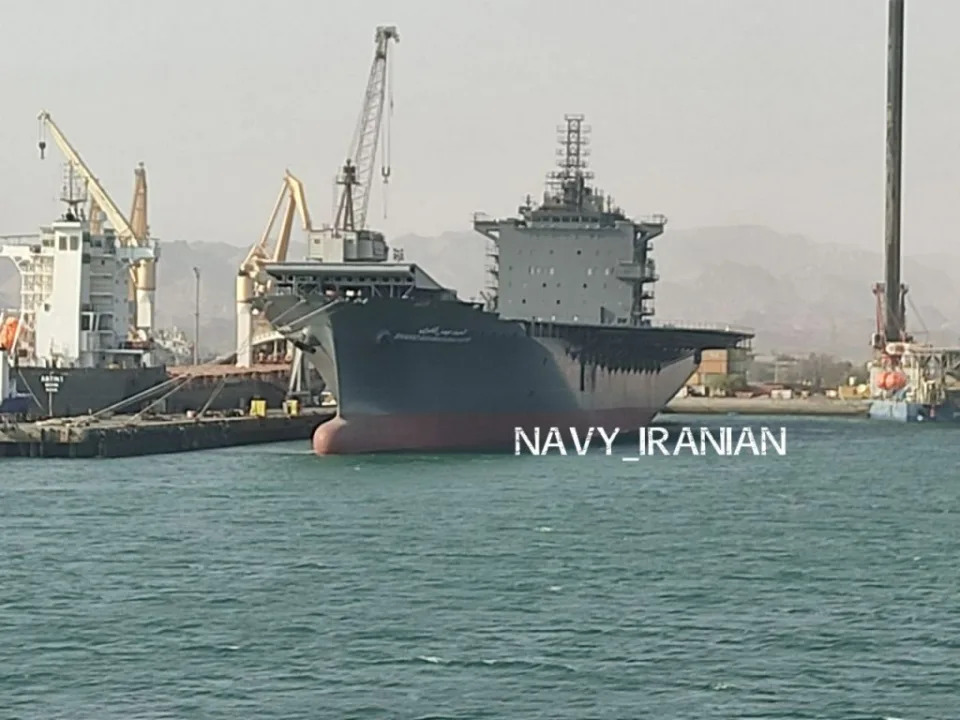
Regardless, there is ample space on the side opposite the angled deck extension for many types of drones and other modular weaponry. The aft deck behind the superstructure could field helicopters or smaller catapult and net/line-recovered drone types too. Cruise missiles launched from containers on trailers or trucks are another option and something that Iran already has experience of using.
Work on the Shahid Bagheri is being conducted by the Iran Shipbuilding & Offshore Industries Complex Company (ISOICO) close to Bandar Abbas and had reportedly begun by May 2022, when it was noted in dry dock.
The ISOICO shipyard has some experience in similar conversions, having previously adapted a former oil tanker into the Iranian Navy’s Makran, another forward base ship that has a flight deck — albeit a smaller one — for helicopter and drone operations.
AfriPrime App link: FREE to download...
https://www.amazon.com/Africircle-AfriPrime/dp/B0D2M3F2JT
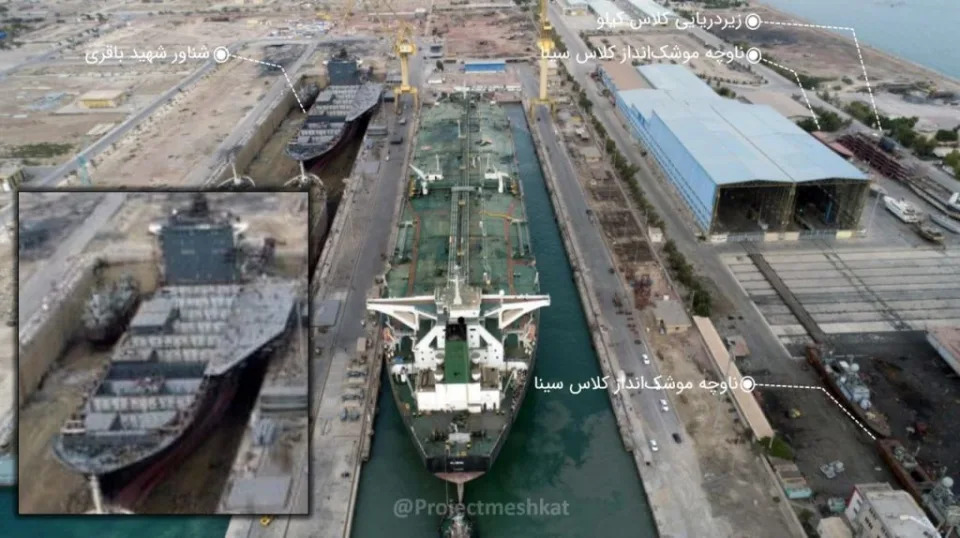
The Shahid Bagheri is hardly a realistic threat to the U.S. Navy and its allies, but the Iranian vessel nonetheless carries a significant symbolic value.
While it wouldn’t necessarily be expected to launch its drones against U.S. and allied warships and other assets in the region in some sustained manner, the Shahid Bagheri could conceivably wreak havoc on commercial shipping, including more opportunistic attacks against poorly defended targets, even for a brief period.
For many years now there’s been a clandestine anti-shipping war fought between Iran and Israel, something we have repeatedly reported on.
Meanwhile, since the beginning of the Israeli war in Gaza last October 7, an unprecedented campaign of anti-shipping attacks has been waged by Iran-backed Houthi militants, especially with drone and missile strikes targeting shipping moving through the Red Sea, the Bab el-Mandeb Strait, and the Gulf of Aden.
The effects of this campaign have included the rerouting of some cargo vessels around the southern tip of Africa, and the establishment of the American-led Operation Prosperity Guardian coalition and the European Union’s naval task force Operation Aspides to defend some of the commercial shipping that passes through the Red Sea.
Having the ability to launch drones, especially one-way attack drones, from a dedicated drone carrier could be beneficial in some scenarios against some enemies, as well as for ‘gray zone’ attacks. It remains very questionable, however, how long the Shahid Bagheri would survive were it to be used in an offensive capacity like this. The fact that it can deploy these capabilities, potentially anywhere around the globe, also gives it a unique place in Iran’s military portfolio. While it may not survive long after doing so, being able to threaten targets far beyond its current reach using weapons launched from its own country or by its proxies certainly seems like an asymmetric play Iran would go for, regardless of its actually tactical relevance.
The IRGC has released a short video demonstrating one of its "suicide drones" in action. The video is undated and kind of loud.
Video obtained from #Iran's Al-Alam TV. pic.twitter.com/RMAwfVh6Xr— Kian Sharifi (@KianSharifi) April 21, 2021
While the Shahid Bagheri certainly could launch one-way attack drones, missions of this kind wouldn’t necessarily be the best use for it.
Perhaps more relevant is the ability of the Shahid Bagheri to launch drones with greater endurance and performance, aided by its flight deck and ramp, which could then be used to surveil larger areas, keeping tabs on commercial and naval shipping and identifying potential targets. As well as producing targeting information for strikes by other weapons, carrier-launched drones could be used as part of broader, non-kinetic sea control efforts.
If the ship can carry medium-altitude, long-endurance (MALE) drones, like the Mohajer-6, Shahed-129, Fortros, and Kaman-12 types, it could provide persistent and relatively broad surveillance coverage of the area the ship is operating in. These kinds of drones can be armed with small missiles and guided bombs as well.
Lower-observable Saegheh flying-wing types based very loosely on the RQ-170 could also migrate to the sea thanks to this ship.
While drones are seen as the primary aircraft that will operate from the Shahid Bagheri, the vessel would also be able to support helicopter operations. We have already seen the Houthis use helicopter-borne commandos to hijack commercial vessels in the Red Sea, and similar attacks could also be staged by Iran over long distances using this and other forward base ships.
NEW VIDEO: Yemen’s Houthi rebels hijack a cargo ship in the Red Sea over the weekend pic.twitter.com/pkkUJpbe5c
— Trey Yingst (@TreyYingst) November 20, 2023
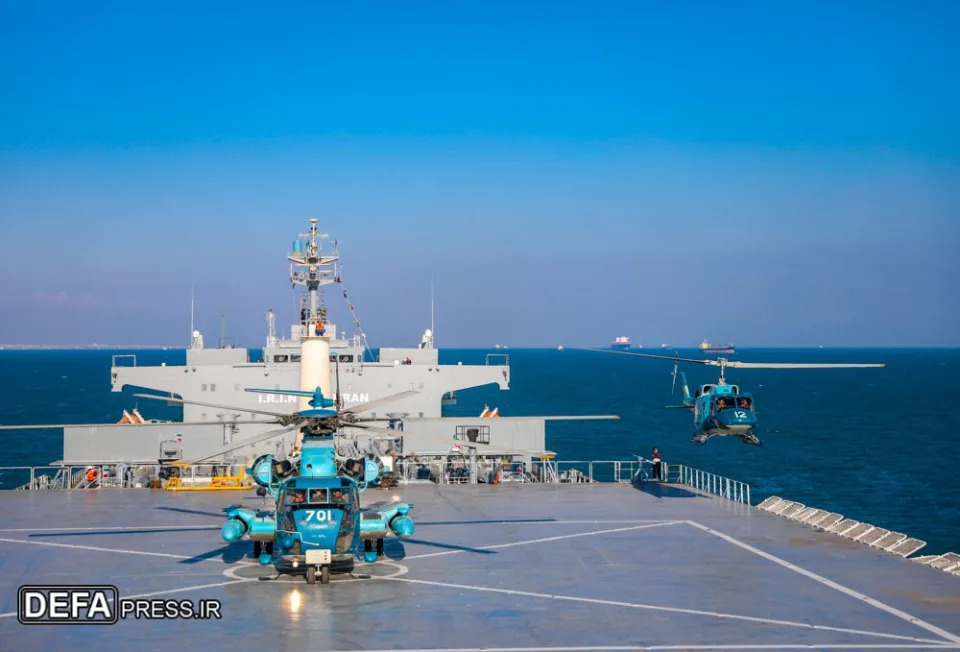
It is unclear when the Shahid Bagheri will enter service, with previous reports suggesting that it could be launched in 2023. Regardless, Iran is evidently expanding its options for operating drones — including one-way attack types — at sea, as demonstrated by its establishment of a dedicated “drone-carrier” division,
The Iranian Army's naval force today launched what it calls a "drone carrier division".
Images released today show drones launched from the Soviet-era Kilo-class submarine Tareq, auxiliary ship Delvar (471), and landing ship Lavan (514). pic.twitter.com/j9kxegFq07— Kian Sharifi (@KianSharifi) July 15, 2022
Previously, another former commercial vessel, the IRGC Shahid Roudaki, was converted into what Iranian media described as an “oceangoing warship capable of carrying aircraft.” As we have discussed in the past, the utility of this design for launching drones is somewhat questionable, as its survivability, but it very clearly points to ambitions beyond Iranian shores, including off the coasts of Saudi Arabia and Yemen.
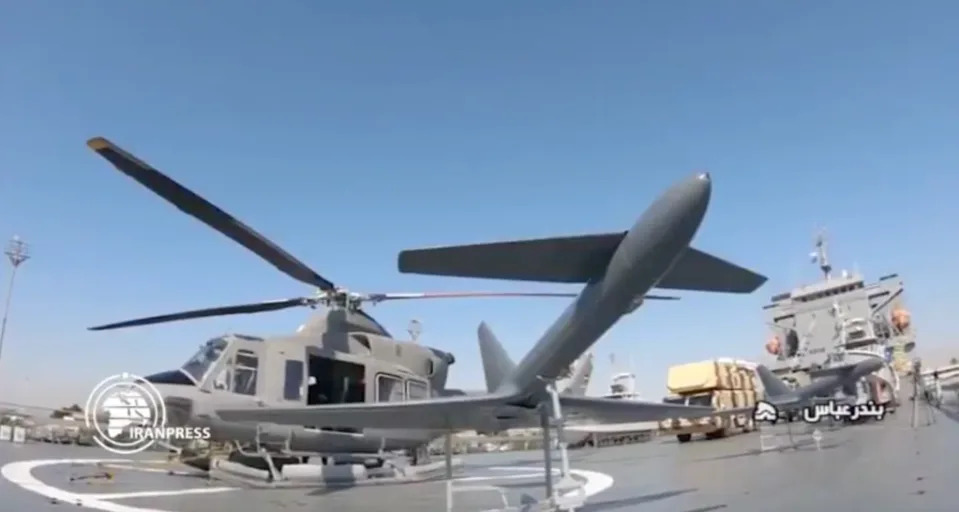
Another stepping stone toward a more practical Iranian drone carrier is the Iranian Navy’s Makran, the former oil tanker that was also transformed into a “forward base ship,” considerably bigger than the Shahid Roudaki, and much closer in size to the Shahid Bagheri. The Makran, which features a flight deck capable of supporting helicopters and VTOL drones, has also demonstrated that it can conduct persistent maritime operations far beyond Iran’s littoral areas.
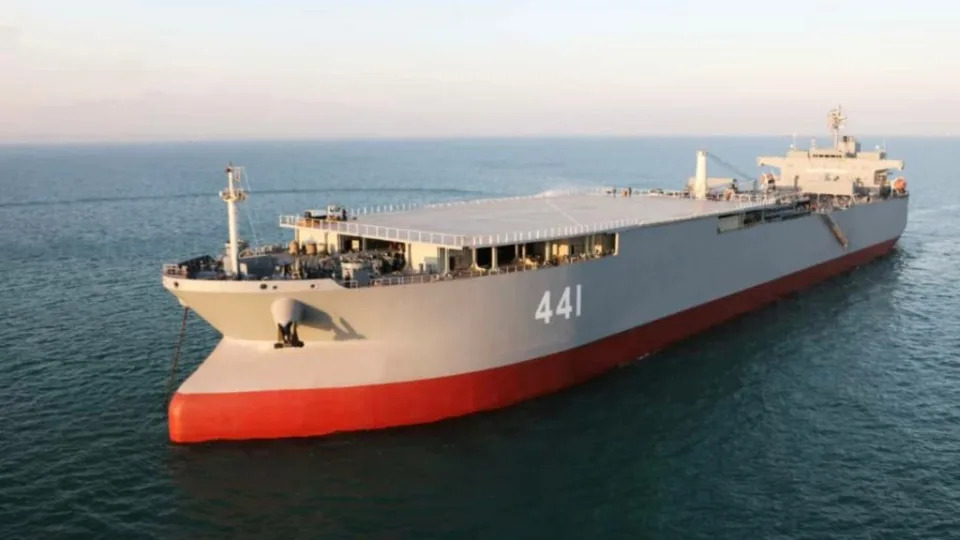
www.twz.com
The Makran has notably undertaken a major power-projection cruise that took it into the Atlantic, exactly the kind of missions that we could see with the Shahid Bagheri as well. As we discussed at the time, the deployment by the Makran was, above all, significant for the fact that it was the first time that Iran had demonstrated its maritime capabilities in a new area of operations, beyond the Persian Gulf and the Gulf of Oman.
Also worth noting is another Iranian floating object completed with an angled deck, the mock U.S. Navy aircraft carrier that was subject to various types of attacks during Iranian maneuvers in and around the strategic Strait of Hormuz.
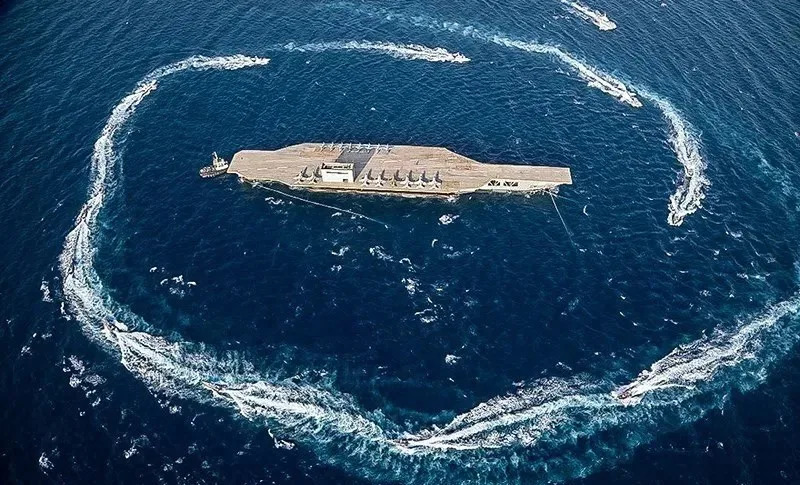
As maritime attacks by Iran and by Iran-backed proxies have shown, the challenge of defeating drones is considerable, especially when combined with the threat of ballistic and cruise missiles. With the Shahid Bagheri, and with at least one other vessel of the same type expected to follow, Tehran will be better equipped to create serious disruption to global maritime traffic not only in waters close to Iran but also far out into the Indian Ocean and potentially elsewhere too, even for brief periods of time.
Beyond that, it would allow Iran to attack from uncommon vectors, and, above all else, it provides a way for the country to have a threatening military presence far abroad, with psychological benefits both domestically and beyond its own borders. However, it shouldn’t be a surprise if the drone-carrier ship ends up being prioritized for non-kinetic rather than offensive missions, based on its overall vulnerability.
AfriPrime App link: FREE to download...




